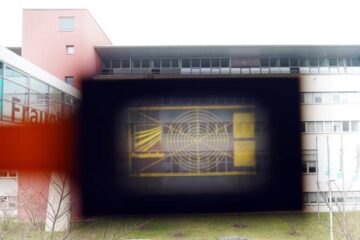New Species of Nematode Found Damaging Pine Seedlings

USDA Forest Service plant pathologists have discovered a new cause of damage to loblolly pine seedlings grown in the South – needle nematodes. In the July 2002 issue of Plant Disease, pathologists Stephen Fraedrich (SRS Insects and Diseases of Southern Forests unit in Athens, GA) and Michelle Cram (Forest Health Protection Program, Region 8) report on finding a previously undescribed species of nematode stunting the growth of pine seedlings in a Georgia nursery.
In 1998, a three-year study was initiated in a southern Georgia nursery to evaluate treatments to replace methyl bromide (MC33), an ozone-depleting soil fumigant scheduled for phase-out by 2005. During the third year of the study, patches of stunted seedlings began to appear in different sections of the nursery fields. The needles of the stunted seedlings were yellowed, and the root systems were much smaller than normal, with few lateral or fine roots.
Soil samples from the affected areas were sent to a nematode laboratory, and soil and roots were also examined for fungus pathogens, but the cause of the stunting could not be determined. When they examined unwashed pine seedling roots under a dissecting microscope, Fraedrich and Cram found large needle nematodes of the Longidorus genus that had escaped the notice of the nematode laboratory. Growth chamber experiments on container seedlings inoculated with Longidorus resulted in root damage similar to that in the stunted field seedlings.
Finding Longidorus was a surprise: the nematodes have been identified in soil from areas where southern pines are grown, but Fraedrich and Cram could not find any published reports of needle nematodes damaging the roots of loblolly or other southern pine species. The USDA-ARS Nematology Laboratory in Maryland was unable to identify the species of Longidorus found in Georgia: the nematode is presently listed as “undescribed” and believed to be a new species.
The new Longidorus is seven to eight millimeters long – quite large for a plant-parasitic nematode – and occurs in relatively small numbers around the roots of stunted pine seedlings. These factors help explain why the first nematode laboratory did not find Longidorus in the soil samples sent from the affected areas. Extracting large nematodes from soil samples requires specific techniques not routinely used by nematode laboratories.
“Damage to pine seedlings by needle nematodes is a previously undescribed problem in southern nurseries,” said Fraedrich. “Nursery managers and pest management specialists who suspect nematode damage should alert nematode testing laboratories to examine soil samples specifically for Longidorus.”
The full text of the Plant Disease article is available at:
http://www.srs.fs.fed.us/pubs/viewpub.jsp?index=4444.
For more information: Stephen Fraedrich at (706-559-4273) or sfraedrich@fs.fed.us.
Media Contact
More Information:
http://www.srs.fs.fed.us/pubs/viewpub.jsp?index=4444All latest news from the category: Life Sciences and Chemistry
Articles and reports from the Life Sciences and chemistry area deal with applied and basic research into modern biology, chemistry and human medicine.
Valuable information can be found on a range of life sciences fields including bacteriology, biochemistry, bionics, bioinformatics, biophysics, biotechnology, genetics, geobotany, human biology, marine biology, microbiology, molecular biology, cellular biology, zoology, bioinorganic chemistry, microchemistry and environmental chemistry.
Newest articles

Wildfire danger to increase due to climate change
WSL Institute for Snow and Avalanche Research (SLF) researchers expect an elevated wildfire danger in the Alpine Foreland from 2040 onwards due to changing meteorological conditions. The danger currently remains…

Advanced Brain Science Without Coding Expertise
Researchers at Helmholtz Munich and the LMU University Hospital Munich introduce DELiVR, offering a new AI-based approach to the complex task of brain cell mapping. The deep learning tool democratizes…

Transparent emissive microdisplays
… for ultra-light and compact augmented reality systems. As part of the HOT project (High-performance transparent and flexible microelectronics for photonic and optical applications), scientists from the Fraunhofer Institute for…





















